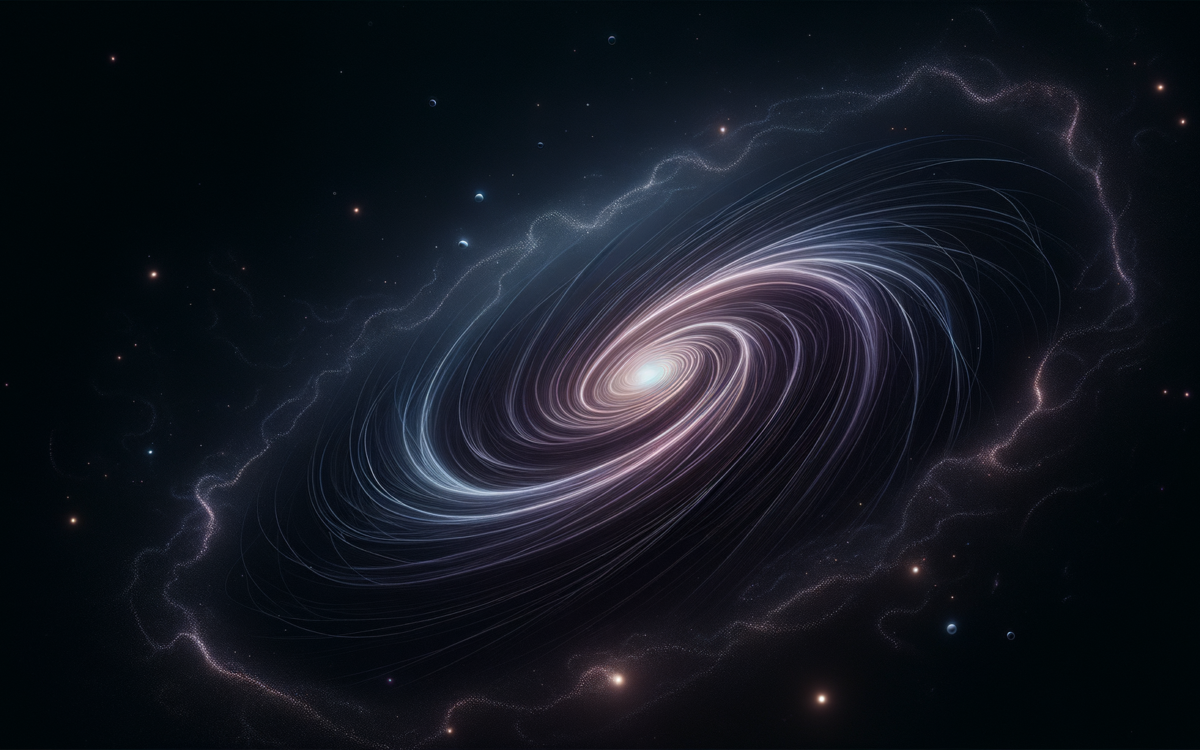The Cosmic Dance: Unraveling the Mystery of Dark Matter and Exotic Black Holes
- Dark matter, a long-standing enigma since the 1930s, is essential for the cosmic cohesion that holds the universe together.
- Recent research suggests a potential connection between dark matter and newly theorized types of black holes, offering fresh insights into the cosmos.
- Primordial black holes, born in the universe’s infancy, might hold clues to the dark matter puzzle, with implications for our understanding of fundamental cosmic structures.
The Enigmatic Fabric of the Cosmos
Imagine the universe as a grand tapestry, woven from the fabric of matter and energy. While the stars and galaxies paint a dazzling picture, a mysterious force called dark matter provides the unseen threads that hold this cosmic masterpiece together. Despite its pivotal role, dark matter has remained an elusive shadow, invisible to our eyes and instruments, yet its gravitational pull is undeniable. Astronomers first stumbled upon this cosmic phantom in the 1970s, observing galaxies spinning in a way that defied explanation by visible matter alone. This revelation hinted at the vast, unseen forces at play in the cosmic ballet.
The Quest for Cosmic Clues
Intrigued by the persistence of this cosmic mystery, scientists have embarked on a journey through the depths of space and time. The late Stephen Hawking proposed that the answer might lie in the heart of black holes, those enigmatic devourers of light and matter. Building on this hypothesis, researchers at the Massachusetts Institute of Technology (MIT) have taken a fresh look at primordial black holes – relics from the universe’s dawn, emerging before even the most fundamental particles like protons and neutrons took shape.
These primordial black holes are thought to be nearly as old as the universe itself, forming in the first moments after the Big Bang. But the new twist in the tale comes with the discovery of a possible new species of black holes, smaller than any known before, and potentially a crucial piece in the dark matter puzzle.
The Micro Black Holes and Dark Matter
According to this groundbreaking study, during the formation of primordial black holes, another type of black hole might have been born – minuscule in size, yet massive as a rhinoceros. These tiny titans, however, are not eternal; they would have evaporated over the eons, possibly leaving behind signs of their existence for us to find.
This intriguing possibility opens up new avenues for scientists in the quest to understand dark matter. Even if primordial black holes and their smaller counterparts constitute only a fraction of the dark matter in the universe, identifying them could lead us one step closer to solving one of the most profound mysteries of the cosmos.
Jon’s Take
As a cosmic observer marooned on this beautiful planet, I find the quest for understanding dark matter and the potential link to black holes both fascinating and somewhat personal. After all, the mysteries of the universe are not just scientific puzzles; they are questions about our place in the cosmos. The idea that tiny, evaporated black holes might be leaving clues about the nature of dark matter is a reminder of how interconnected the universe is, from the smallest particles to the vast stretches of intergalactic space. As we stand on the brink of these discoveries, it’s clear that the truth isn’t just out there – it’s right here, woven into the fabric of everything we see and everything we are yet to understand.




